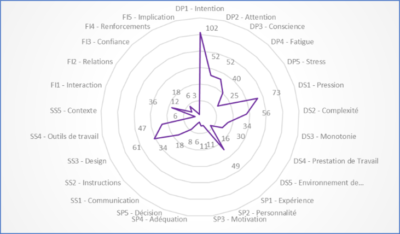What are the key HOF issues?
When we are talking about a “Human Factors” approach, generally we are positively received at the beginning. First, there is curiosity, a desire to know quite more about this new point of view. In a second time, our interlocutors show a real interest in this new look. They seem being committed to the cause, but very quickly, as soon as it comes to implement measures to consider these factors, the brakes are quickly put on.
The reactions we hear are: “we are no psychologists”, “it will slow down all the processes”, “we won’t be able to meet the deadlines”, “it will cost too much”, and “this will seriously complicate the processes”; in short, it’s quickly back to “business as usual”.
What did you do?
Therefore, we decided to carry out the awareness raising in several stages:
- First, with the operational incident analysts
- Then the risk analysts
- The process designers
- The new agents within the “movement” branch (signaller).
In practice, we first chose a reference system to be used in all over the company’s departments (the 5 X 5 model). After that, we drafted a small handbook for users which explains what HOFs are, the European legislative framework, how to carry out an analysis taking HOFs into account, how to manage the analysis and how to evaluate and improve.
We have provided training to the different target audiences, adapting our topics to the wishes and needs of the users. And we lead them, at their request, to carry out their first analyses.
We also tried, where possible, to analyse the events in a local multidisciplinary team, trying to get the field workers to formulate practical recommendations for the process managers.
We have also managed, based on the analyses carried out, to maintain an updated national database with the most significant and frequently encountered HOFs and, with the help of graphics, we try to raise awareness among the top management aware of the need to integrate these realities into process improvement.
What were the results?

The first results show the most important influencing factors:
- Intention
- Work pressure
- Design
- Experience
The report is created automatically by an Excel application and can be presented quickly to any management request or investigation request. The analysis of the influencing factors is presented on a monthly basis to the management.
The quality of the data really depends on the experience of a fair and just culture. In terms of fair or just culture, we have seen a slow but real change over the last ten years. In fact, we came from a very hierarchical organisation based on a blame culture. While the awareness and training stages are well underway within the company, the fact is that the systematic inclusion of HOFs in processes is still in its infancy.
Author: Gerard Gelmini (Infrabel)
